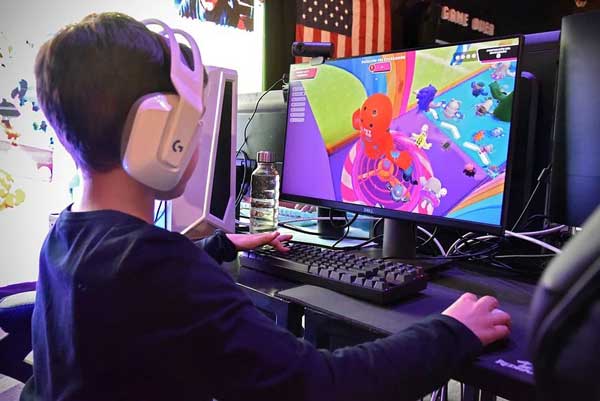Concerns rise over youth addiction to video games and social media

[A child is playing video games instead of socializing. Photo Credit to Rawpixel]
In a troubling revelation, TownsendLA.com reports that 8.5% of American youth, aged 8 to 18, exhibit signs of video game addiction.
This translates to roughly one in ten young gamers.
Meanwhile, addictionhelp.com estimates that the true rate of video game addiction in the U.S. could be between 1.7% and 10%, and that the issue is likely underreported due to the normalization of gaming in American culture.
The issue extends beyond video games.
Cross River Therapy has found that 70% of teenagers and young adults in the United States are grappling with social media addiction.
This is a major concern since addiction can rewire young brains to seek instant gratification.
Statistics indicate that young adults, especially young single women, are most affected, with 40% of those addicted to social media aged between 18 and 22.
The physical repercussions of these addictions are significant.
Prolonged social media use and gaming can lead to poor posture, myopia, and a host of other issues.
A recent study revealed that the average American spends more than seven hours daily on their phones, with Gen Z averaging nine hours.
This excessive screen time is linked to weakened language development, concentration issues, and symptoms of hyperactivity, anxiety, and aggression in children.
Although it is difficult to determine the cause of such addiction, it can be attributed to various social and environmental factors as well as personal characteristics.
Factors such as family dynamics, adolescent depression, and anxiety can fuel this addiction.
Game addiction is often linked to increased aggression, criminal behavior, and negatively impacted school performance.
With the increasing time spent on smartphones, people often complain of experiencing neck pain due to excessive phone usage.
The World Health Organization (WHO) sparked debate in 2019 when it classified gaming addiction with a specific disease code.
This decision raised concerns as the official disease code for 'gaming use disorder' (6C51) was categorized under 'Disorders due to addictive behaviors,' placing it in the same group as gambling addiction (6C50).
To combat these addictions, experts recommend practical measures such as moving children’s computers to communal areas like the living room.
This strategy aims to reduce the time children spend gaming or accessing potentially harmful websites by increasing parental oversight.
While it is often necessary for teeangers to use the internet for educational purposes, moderation is key.
Parental involvement and education are crucial in managing the desires of teenagers who view gaming and social media as major sources of pleasure.
Maintaining a healthy family dynamic is essential, and seeking expert advice can be beneficial.
Efforts to address these issues should focus on improving youth concentration and learning disabilities.
Diagnosing and responding to the fundamental reasons of media addiction is vital for achieving long-term solutions and ensuring the emotional stability of young people.

- Kunwoo Lee / Grade 12 Session 7
- The Science Academy STEM Magnet

![THE HERALD STUDENT REPORTERS [US]](/assets/images/logo_student_us.png)
![THE HERALD STUDENT REPORTERS [Canada]](/assets/images/logo_student_ca.png)
